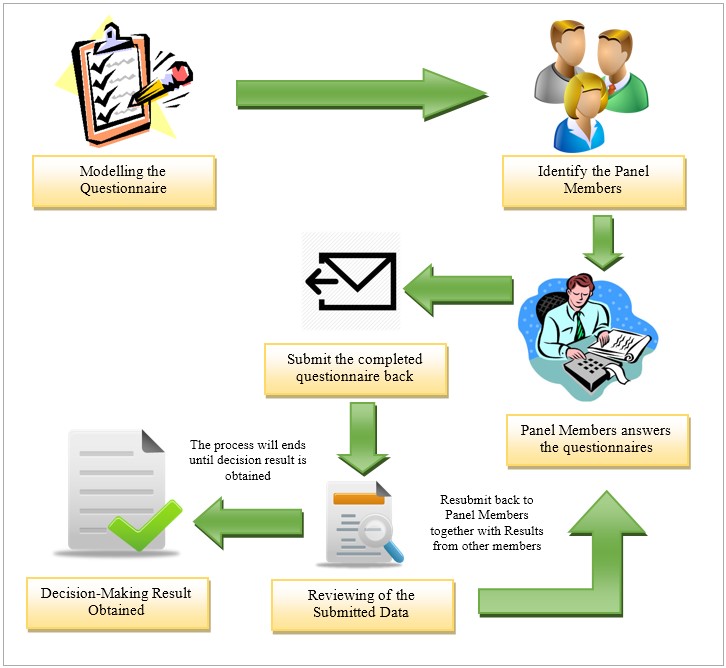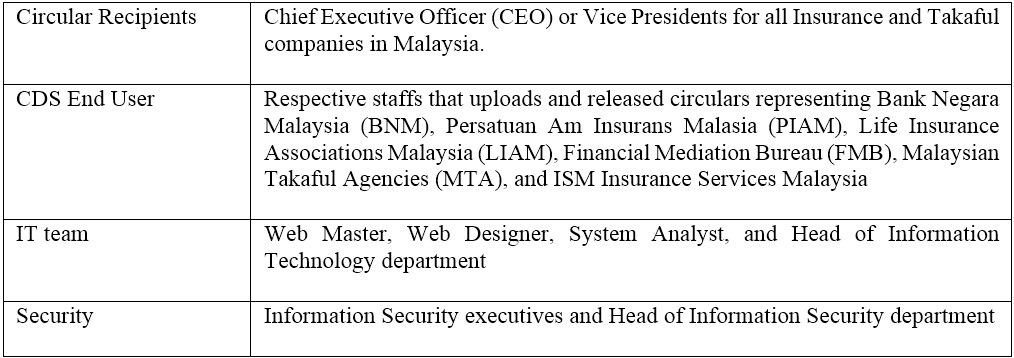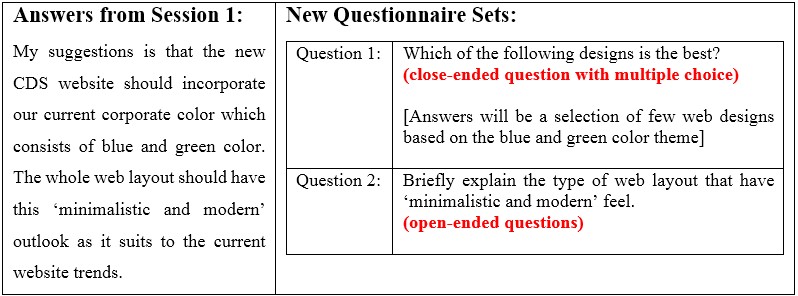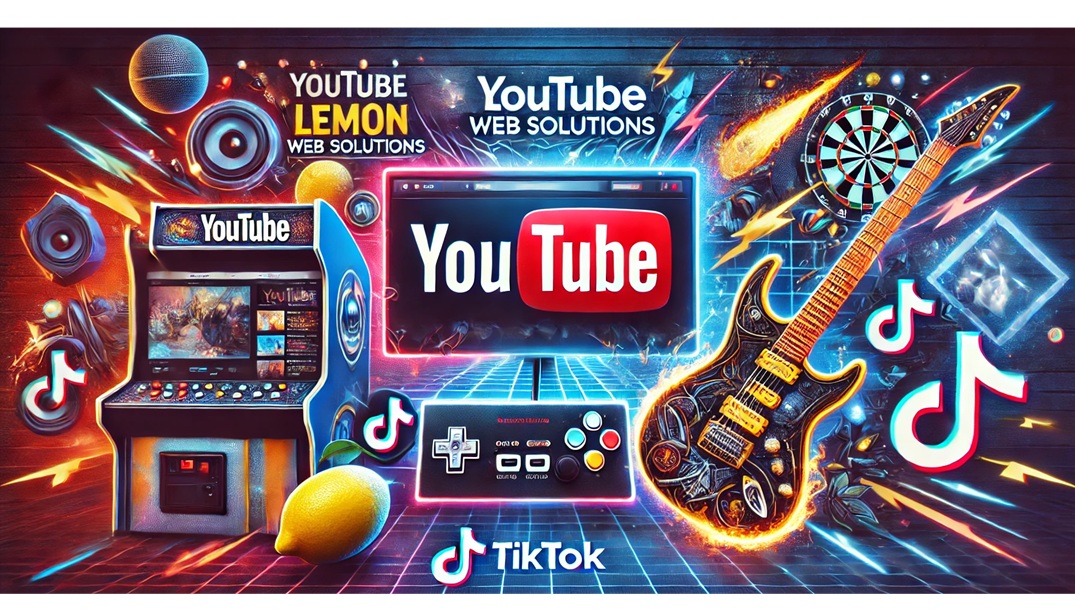A good decision-maker is a common traits of a successful leaders in any organization. This traits are one of the important skills for leaders in solving problems, generating ideas, identifying source of the problems, forecasting industrial trends and more. Definition of decision-making as defined by Wikipedia (2014) website stated that:
"Decision making is defined as a cognitive process resulting in the selection of an ideas, solutions, beliefs or a course of action among several alternatives possibilities."
1. INTRODUCTION
All decision-making should ultimately concludes that the decision-maker choosing the best solutions available and implement them. In layman's term, it is a process of selecting a solution from a few available alternatives or possibilities
Generally, a good decision is achieved not only by experience, efficiency of the decision-maker, but also relies on the accuracy and validity of an information that the decision-maker have. This information collected will be one of the decision-maker's tool in making decisions.
There are three types environment in process of decision-making whether the information obtained is complete, incomplete or there is no information at all which resulting in creating three different decision-making environments which is making decisions in certain conditions, making decisions in uncertain conditions and making decisions in risky conditions (BBPP1101 Principles of Management, 2008 pp 31-41).
A decision in certain conditions made when the decision-maker have sufficient information. For example, I am deciding on buying a new car whereby I am prompted with two choices. Both choices are the same make and model. However, price differs as one the car is being sell 10% lower than the other. Therefore, I would definitely choose the cheaper one. In this example, it shows that a decision made were based on information I have.
Uncertainty Conditions environment is when the situation where the decision-maker does not have any information that would help in his decision-making. Therefore the decision is made without the use of information prior to the situations but instead relies on his experience and discretion.
Risky Conditions environment is a situation where the decision-maker makes his decision without the use of any recollection of data or knowledge related to the situation. Therefore the outcome of the decision made is unknown.
There are basically three methods that a group uses to generate results which is Brainstorming technique, Nominal Group technique and Delphi technique.
Brainstorming Technique
In a brainstorming session, each participants will contribute their own ideas, solutions accordingly turn by turn. The process will go on until all ideas have been collected. Once ideas has been collected, the discussion for each ideas will took place discussing on pros and cons for each idea. Once the discussion phased complete, the group leader will decide which idea will be implemented.
Nominal Group Technique
This technique is a form of decision-making where group members will propose and evaluate ideas individually. The idea is drafted and recorded individually at first. Once all group members has prepared their ideas, a discussion is to be held and these ideas will be discussed thoroughly with pros and cons generated for each ideas. After the discussion has been done, group members will have to vote for the best ideas to be implemented.
Delphi Technique
The Delphi method is a structured communication technique, originally developed as a systematic, interactive forecasting method which relies on a panel of experts.
2. IMPLEMENTATION of delphi technique
2.1 - Project information
One of my major project for the first quarter of the year 2014 is to revamp our existing Circular Distribution System (CDS) website. This website served as a circular distribution website whereas the primary function of the website is to provide official letter circulation among all Insurance and Takaful operators in Malaysia. These circulars are generally announcement, bulletins, newsletters, statistical reports, notices, and others. Circulars are issued by Bank Negara Malaysia (BNM), Persatuan Am Insurans Malaysia (PIAM), Malaysia Takaful Agencies (MTA), Life Insurance Associations Malaysia (LIAM), Financial Mediation Bureau (FMB) and ISM Insurance Services Malaysia.
When I was initially assigned for this project, I had to plan first objectives, timeline, milestones and tasks for my project members. The initial milestone will consists of five timeline phase which is initiation, planning, project execution, monitoring and control and lastly project closing. Once I have defined all these accordingly, it is time for me to draft User Requirement Specifications (URS) document as part of the project initiation phase. URS document is a document contains detailed information of the new CDS website. The document consists of explanation of the primary function of the web application, sets of requirement for site function, designs, and required server specifications.
Due to my lack of expertise in web development and lack of actual experience on the CDS usage, it will be a difficult task for me to draft the URS document. Therefore, if I were to proceed drafting the URS document at this stage, the decision made will be made under uncertainty environment and the outcome will have high risk. To improve the situation, I have decided to use a group decision-making approach for the development of the URS document. After valuating each group decision-making technique, I have decided to use Delphi group decision-making techniques and below are the main reasons for opting this technique:
- Lack of expertise and actual experience on the situation.
- Additional information acquired along the way would be best. For example panel experts can input some additional ideas for this.
- Collaboration between circular recipients, circular distributors, web experts and all Insurance and Takaful operators are needed in order to accurately identify the business needs of this project. This collaboration are difficult to achieve in brainstorming technique as it involves high costs to invite CEO from all Insurance and Takaful operators in Malaysia. It would be more cost-effective to just use Delphi technique instead.
- Proper documentation are required as a reference for suggestions and feedbacks from these panel experts.
The Delphi technique has proven to be a popular tool in information system research for identifying and prioritizing issues for managerial decision-making as pointed out by Chitu Okoli and Suzanne D. Pawlowski (Information & Management Volume 42, pp 15-29). After much research on which group decision-making method, I have come to a conclusion that Delphi technique is the best group decision-making method that can be applied to my current situation.
2.2 - OVERVIEW of technique
Since I am going to use Delphi technique to aid me in drafting my project's URS document, the first step for me is to properly outline steps involved in this technique. The steps should consists action such as modelling the questionnaire sets, identifications of the panel experts, reviewing the submitted answers until a decision can be achieved as a best sets of requirement point to be used in my URS document.
Referring to figure 2.0, as a first step I need to create the questionnaire model which consists of questions needed to be ask to the participant members. Next, I need to identify the panel members that would be participating in these questionnaires. Once the participants have been identified, these questionnaires will be distributed to them together with a deadline for submission of the answers. Once the panel experts has returned with the answers and feedbacks, I will go through and summarizing the collected information, and resend back to these panel experts with a more specific and detailed questionnaire form that has been reviewed. This process is repeated until it reaches the fourth sessions where I have to compile and summarizing a report based on the collected data. Therefore, after the fourth session I will use the selected ideas as part of my URS document for my project.
2.3 - Modelling the delphi questionnaire
Next, we need to draft the questionnaire model prior to the situation. Before we even begin drafting the questionnaire model, the number one question that we should ask ourselves is, what information we need from this questionnaire. Decision-maker need to properly examine the situation at hand first to come up with proper questions needed to be ask. Therefore in my scenario, the information I need are as per following:
- Areas desperately need for an improvement of current existing website
- The type of web design and theme color suitable for the website
- Suggestions for any new features of the system
Once the issues has been identified, I need to convert this to a form of question format so that it can be used to ask to the panel experts. Most of these questions are normally in forms of open-ended questions where the panel experts will input their feedbacks prior to the question asked. However, other question method can be used as well such as close-ended questions with two answer variables, or even close-ended questions with scaling system.
Figure 2.2 is an example sets of questions derived from the example situation stated before. In this sets of questions, question 1 and 2 is an open-ended question where participants may need to input their answers based on their knowledge, experience, and expertise. Question 3 however is a closed-ended question with scaling system. In this example, it shows that the questioner asked a rating of the current existing website's structure and navigation on a scale of 1 to 5.
2.4 - identify the panel experts
The next step is to identify who will be the participants of this questionnaires. Experts in related sectors are identified and selected as panel members. (BBPP1101 Principles of Management, 2008 pp 52).
Since I lack of expertise and actual experience on the CDS website, I need expert feedbacks, opinions prior to this projects.
Explanation and elaboration for figure 2.3 are as per following:
- Circular Recipients – These are the people who receives the circulars.
- Current End User of the CDS – This includes circular senders, and existing CDS web administrators. These people are the actual users of the existing system and it would be wonderful to get their feedbacks and suggestions on what to improve for the new revamped website.
- Company's own web development team such as Information Technology (IT) staffs, web designers, developers, and IT Managers.
Once the participants have been identified and the questionnaires has been prepared, I will send invitation to all of the participants requesting their time on this.
2.5 - REVIEW of the submitted answers
Once the participants has submitted the answers back to us, my next task would be review all of them and generate reports and summary based on the collected answers.
All the answers are summarized and bound together in the form of a report. It is returned to all panel members together with a more specific and detailed questionnaire form that has been reviewed. (BBPP1101 Principles of Management, 2008 pp 52).
Reviewing 'Open-Ended Questions' Answers
Referring to figure 2.4, question 1 and 2 is an open-ended questions, therefore the answers submitted for these types of questions are normally in a form of long text that consists of ideology, suggestions, feedbacks & others.
For example, one of the participants answers this for question 2:
- Question: Suggestions for the new website outlook such as theme color, user interface and others.
- Answer: My suggestions is that the new CDS website should incorporate our current corporate color which consists of blue and green color. The whole web layout should have this 'minimalistic and modern' outlook as it suits to the current website trends.
Based on the figure 2.5, it shows that we can derive new questionnaire sets based on the previous submitted answers for the 1st round of the questionnaire sets. The new questionnaire will be send back to the participant members.
Reviewing 'Close-Ended Questions' Answers
There are several types of close-ended questions and right now we are going to discuss two types of close-ended questions only which is normal close-ended questions and rating-scale close-ended questions.
The normal close-ended questions are normally questions that will have two choice presented as the answers. For example, have you ever been to Malaysia? The answers will be either yes or no only. To sum up the results for this questions is fairly easy, as all you have to do is count the total number of votes for each option.
Rating Scale questions calculate a weighted average based on the weight assigned to each answer choice. If needed, the decision-maker can change the weight of each answer choice in the Design section of the survey, even after the survey has collected responses. (Source: http://help.surveymonkey.com/articles/en_US/kb/What-is-the-Rating-Average-and-how-is-it-calculated)
Based on the figure 2.6 which is showing an example result for a sample question, we can calculate the score as per following calculation:
2.5 – Finalizing sessions
The process is repeated until a unanimous decision is achieved. However, due to time constrains and keeping up with my project timeline, I need to limit the total number of sessions to only 4 or less. This can be done by providing more closed-end questions towards the last sessions.
As you can notice on the figure 2.9, the total numbers of open-ended questions are reducing to none. Reason is we do not wish to have any un-explained or unclarified answers given which calls for another sessions of questionnaire.
A summary will contains all finalized agreed ideas from all other participants. These points will be summarized in form of a report and will be inputted to my URS document as references. This concludes the decision-making process.
3. REVIEW ON THE SELECTED TECHNIQUE
3.1 - Advantages of the delphi technique
There are several advantages of the selected group decision-making technique. Some of the main highlights are:
- 1.Maintain Confidentiality in Group Decision-Making
Each participants able to communicate and provide their suggestions, feedbacks, opinion discretely without the interference of other participant members. Each participant members are able to express their answers with confidentiality as the communication only occurs between me and the each participant members only. - 2.Better Input from the Participant Members
The communication is entirely focused members by members, which means rather than a normal group discussions, each of every participant members are able to express their opinions, feedbacks and suggestions easily. - 3.Quality Feedbacks from the Right Person
When using this technique, the decision-maker is able to choose who will be the participants as this will definitely help improve the level of accuracy of the data and information collected from this approach. - 4.Documented Summary Reports
All of the collected information and data retrieved from this technique will be properly documented and summarized in forms of a report. This report can be used as reference for my User Specifications Requirement (URS) document as part of my reference later.
There are several disadvantages of the selected group decision-making technique. Some of the main highlights are:
1.Time Consuming
When using Delphi Group Decision-Making technique, this approach tends to consumer longer time to gather the information. For example, referring to my recent use of this technique for my CDS project, it took a total of four weeks to reach for a decision.
2.Biased Result
The result generated from this technique often are biased based on the panel experts' opinions and experience pertaining to the issue. Due to the fact that the decision-maker can select who will be the participant members, the outcome of the result will highly be based on the experts' knowledge pertaining to the situation.
3.Idle or Slow Feedback
In my recent endeavors conducting this technique, I had faced with an idle members who did not respond at all to the questionnaire sets. There are sometimes that I receive delayed feedback and suggestions.
4.Lack of Creative or Additional Ideas
This technique are generally interacted via e-mail, post or online survey applications as they are no direct communication involved. Due to lack of interactive communication, participant tends to only answer question based on what they are being asked, therefore no additional ideas will be generated along the way. In layman's term, what you ask is what you get.
4. CONCLUSION
After going through few selections of group decision-making method, I found that Delphi's technique is the most effective technique for my project. Main reason behind this was when using this technique, I was able to document all suggestions and feedbacks effectively. When the questions are defined by me, all of the information delivered in a very structured manner as I was in control of the flow when using this group decision-making method. Additionally, this is a more cost effective rather than conducting brainstorming sessions between high profile corporate people such as CEO of insurance and takaful companies.
Along the way I did encountered some of the mishaps such as idle participant members which causes delays in the whole process. Other than that, I have to dedicate longer time for this process as this technique does consumes time compared to other group decision-making method.
However, the advantages of using this group decision-making method outweigh the disadvantages in many aspects, as this technique are highly suitable for my current situation. With the use of this technique, I was able to gather information accurately for the URS document and at the same time able to conceptualize the new CDS website. Information gathered through this technique will definitely aid me in drafting the URS document.
Chitu Okoli*, Suzanne D. Pawlowski (2004), The Delphi method as a research tool: an example, design considerations and applications. Information & Management Volume 42
References
Prof Dr Mansor Fadzil, Prof Dr Zakaria Ismail (2014), BBPP1101 Principles of Management, Second Edition, Open University Malaysia (OUM)
Napoleon Bonaparte. [Online] http://en.wikiquote.org/wiki/Talk:Napoleon_I_of_France, WikiQuoate.Org
Hughes, Julian C. Baldwin, Clive (2006). Ethical Issues in Dementia Care : Making Difficult Decisions, Jessica Kingsley Publishers
Harold A. Linstone, Murray Turoff (1975), The Delphi Method Techniques and Applications, Murray Turoff and Harold A. Linstone
Few years back, i was given an assignment paper for my studies on Principles of Management. The assignment paper was about an in-depth discussion about Group Decision Making Methods. I have decided to publish my written articles here after one year from the assignment date. This is due to avoid any plagiarism issues that i might encountered if i publish this earlier than that.
You may download the published assignment paper here.














Comments
This actually looks like an OUM assignment paper